Each master in different ways regarding his work. Each company takes a different fee ...
|
|
Laminate is a strong and stable coating, but over time the surface can ... |
Fake! They will say some about artificial stone and will be right ... |
Supporting with sawdust - Features of the material, useful tips, instructions
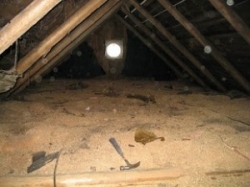
Thinking about the construction of his own home, sooner or later, the question of choosing materials arises before each owner. And this applies not only to the implementation of the structure of the structure, but also of the products from which thermal insulation will be mounted. The modern insulation market can offer a huge spectrum of a wide variety of materials, ranging from mineral wool to extruded polystyrene foam. But even the most expensive material does not guarantee the complete conservation of heat, without its unnecessary losses, while the budget will be significantly reduced due to its purchase. Many experts increasingly began to return to the long -known, but gradually forgotten methods of thermal insulation of buildings. And first of all, we are talking about warming the floor, ceiling and walls with wood sawdust or chips. The article will talk about insulation of the house with sawdust.
Content:
- Features and varieties of sawdust
- Warming the ceiling with sawdust
- Square of the floor with sawdust
- Wall insulation with sawdust
- Tips for insulation of the house with sawdust
Features and varieties of sawdust
- Sawdles are called particles of processed wood obtained by sawing, externally they look like a small cork.
- There is such a type of wood waste as shavings. The differences between them in the manufacturing method, so for the production of chips wood must be strict or drilled, it also has a slightly larger size (approximate length 3-5 cm) than sawdust.
- Sawdles can also be of different fractions from 5 mm to 3 cm. The length depends on the technological processes of the woodworking industry, that is, what type of tool is used in each case.
- This is an environmentally friendly material that, in addition to a low cost (on average per price, ranges from 10-70 rubles, and often give them free of charge on the sawmills) has a lot of other advantages. Among the more significant, excellent thermo -insulating and sound -absorbing properties and a relatively small proportion of the product can be noted. Basically, carpentry waste is made of solid wood, such as spruce, pine or ash.
Warming the ceiling with sawdust
The issues of insulation of the ceiling should be dealt with in private housing construction from any material, whether it be a wooden house, or made of brick or foam blocks. After all, it is through the ceiling that significant heat losses occur, on average it is about 20%. The most economically profitable way to thermal insulation of the design is to lay a thick layer of sawdust.
Of course, laying wood processing products is not easy. Before starting direct installation, you will have to carry out large preparatory work. First of all, this procedure is aimed at protecting against fire, since the tree is extremely fiery in any form, that is, it easily ignites and has a long combustion time.
The necessary materials and tools:
- wood sawdust of small and large fraction;
- sand, clay or slag;
- lime and copper sulfate (or boric acid);
- material for the substrate (corrugated cardboard or any other breathable materials, that is, with good vapor permissiveness);
- sealant and mounting foam;
- antipyrene, hydrophobisators and antiseptics for wood (in the event that the ceiling boards do not have protection against mold and fungi, fire and water, then preliminary comprehensive treatment should be carried out);
- construction Stapler and brackets to him.
Stages of work
All work begins with the protection of ceiling beams and boards from possible adverse factors. As a rule, high -quality buildings are already built from processed material. But if such a procedure was missed for some reason, then it is necessary to conduct it now.
How to carry out processing correctly
Wood structures protect comprehensively, in compliance with the following sequence:
- antiseptic agents that prevent putrid phenomena and protect against insects;
- fire -protection drugs, for resistance to fire and elevated temperatures;
- hydrophobizers that prevent moisture from entering the structure of wood and leaching the previously applied products, at the same time, water -repellent substances should not interfere with excess humidity from the boards.
It is necessary to observe the compatibility of all funds among themselves. It is advisable to choose a product line of one manufacturer.
Laying the substrate
- After the required protective work is carried out, all the seams, joints and available cracks with foam and sealant should be sealed. Installation foam is used in places with large gaps, small cracks and cracks are sealed with sealants on acrylic, polyurethane, thiocol or silicone basis. The bitumen composition, although good for roofs, does not withstand high temperatures, but in principle no one prohibits it.
- It is not recommended to only dump all the cracks, since due to the special structure of the foam it is very quickly ignited, which is extremely dangerous in cases of thermal insulation of the structure with wood sawdust.
- In addition to the cracks in the ceiling ceiling, all other holes available in the roof structure are also closed. This is necessary so that precipitation does not fall into the insulation or with gusts of wind does not occur the heat -insulating layer. At the same time, you should leave the places through which the air will pass, for example, small attic windows. Such a measure is needed to dry the stacked sawdust, as well as to ventilate them.
- Do not forget about cutting the protruding parts of the foam flush with ceiling beams, otherwise the voids will remain in these places through which the cold will come out and get cold. When all the holes in the ceiling are covered, the sealant and foam are dried and aligned, you can lay the substrate. This procedure is necessary so that a small cork from sawdust does not crumble from the ceiling and does not create additional dust in the house. After all, no matter how carefully all the cracks were noted, the possibility of their occurrence is not excluded, so you should be insured in advance.
- The substrate must be necessarily with parapropable properties, otherwise warm air and steam, rising up, will linger between the boards and materials, forming unnecessary condensate, and in the future the development of bacteria, mold and genes, that is, the failure of the entire structure, is not excluded.
- Any cardboard is suitable, from old boxes, packaging and so on, the main thing is that it is dry.
- Ceiling boards are cleaned of dirt and dust and cardboard sheets are laid on several layers. The material should be placed 15-30 cm so that sawdust does not accidentally fall between the seams. Further, all the joints of the substrates are fixed with brackets, it is advisable to put them at a short distance from each other and make sure that all layers of cardboard are seized. Thin cardboard is best laid in 2-3 layers. The edges in contact with the beams are also fixed with brackets, and then along the entire perimeter they pass with sealant or mounting foam.
Selection of sawdust and ways to backfill them
- The wood-based material must be selected dry or slightly wet, with the absence of odors of unusual wood. It is best to pre -treat the sawdust with solutions of antipyrene and antiseptics. When the mass dries, you can add 10% of the lime (fur) and a little copper sulfate (or brown) to it, mix the composition thoroughly.
- There are several basic methods for the installation of thermal insulation from waste of the wood-brown industry. Sawdles can be poured both in a pure dry form and mixed with cement and diluted with water (or the initially wet material is used). The cement mixture should work as quickly as possible, as it freezes for 30-60 minutes, after which it will not work to be carefully tamped.
Dry way
- For a dry method of sawing, it is recommended to fill in two layers. The first consists of a larger fraction or chips, and the second is covered with the smallest products. Such a measure will help to avoid unnecessary dust in the house, which can occur due to filling only small fine-fractional products.
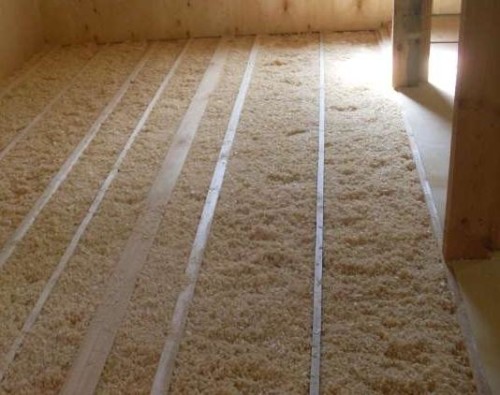
- Also, large sawdust cannot be tamped properly, and this must be done so that the heat -insulating layer does not let the heat through itself, but hold it and even give it back to the room.
- The coarse-frauding material is covered with a layer of 10-15 cm and compacted, a layer of small sawdust is laid on top of it and is also carefully pressed and trampled.
- It is allowed to moisten the layer a little for the best shrinkage. In general, there is enough insulation with a thickness of 20-30 cm. It is also recommended to lay ash, slag (necessarily in a completely burnt and cooled form), sand or clay. This, firstly, will help protect heat, and, secondly, it will prevent the appearance of rodents and the development of mold.
Square with sawdust with cement
- The method of installation of thermal insulation from wet sawdust with cement. For its implementation, it is necessary to stock up on wood-based material, stored for at least a year and has a slightly moist composition. At the same time, be sure to make sure that sawdust does not have foci of the development of bacteria, fungi or mold.
- The ratio of chips, water and cement in the composition should be as follows: 20: 3: 2. At the same time, it is best to start a solution in small portions in order to have time to use it. Dry components (sawdust and cement) are thoroughly mixed, and then water is gradually added, while the mixture continues to interfere.
Tip: Do not forget that the chips must be pre -processed with various protective equipment and mixed with lime, as well as with copper sulfate. If such procedures were not performed in advance, then all this should be added to the prepared solution.
- The prepared insulation is poured between the beams of the floors on the substrate or a layer of sand and compacted. As a result, a heater should be obtained with a thickness of up to 5-10 cm. The mixture grabs well and after completely solidifying it can move around it with fearlessly, it will be a little crunching, but should not be smashed.
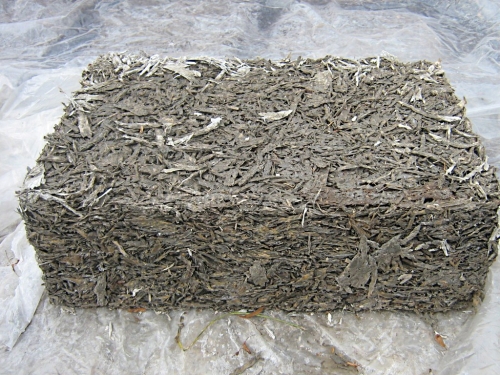
- After the insulation is laid in order to walk normally on the surface of the attic, it is best to arrange a flooring from boards or other hard material. If frequent movements are not planned, then it is allowed to leave the roof in this state (that is, without covering the insulation layer).
Square of the floor with sawdust
Wooding flooring with wood sawdust is an environmentally friendly solution, profitable and from an economic point of view, at the same time, this method allows you to create conditions for a comfortable residence, reduce heat loss and reduce heating consumption.
- Using sawdust for floor insulation, as well as in the case of insulation of the ceiling, require preliminary processing from rodents, insects and the development of pathogens. For this purpose, special finished products or slaughter dry lime and broken glass are used. You just have to be very careful about the composition in which glass is added. Most often, they refuse such a tool in favor of a lime pusk and copper sulfate.
- The differences in the floor insulation and the heat insulation of the ceiling are that it is extremely problematic to add an insulator that has given a shrinkage in the genital structure. This means that you should take care in advance and choose a method in which the mixture will not decrease in volume over time, which, ultimately, will lead to heat leakage. In practice, this means that arranging the protection of the floor from freezing, the most often packed upholstied sawdust, and mixed with various components and later hardened.
- In order to prepare such a composition, it is necessary to add gypsum or cement to the sawdust. The following proportions are recommended: 85 % of the mass is sawdust, 5 % gypsum and 10 % lime-gun lime or lime dough (which is required twice as much as dry lime). Do not forget that gypsum grasps almost instantly, in order to extend the slightly duration of the solution of gypsum, you can replace a cement, which, although it has a short time of life, but still, it is more than that of the gypsum mixture.
- It is not necessary to dry the sawdust in front of the kneak, cooking the insulation should be in small portions and mix all the components thoroughly. If the sawdust seem too dry, then add a little water or lime milk to the mixture. Check the degree of readiness, you can squeeze the prepared composition in the hand if the lump does not crumble and does not spread, but holds the shape well, which means that the mass is ready.
- If the floor is insulated in the already operated room, then the flooring is dismantled, the floors are treated with antiseptic primers and moisture -resistant mastics, and then a substrate of vapor barrier or film is laid.
- A prepared mixture of sawdust is carefully laid on top of the substrate and is thoroughly compacted, the height of the layer is about 10 cm for the first floor and up to 20-30 cm for the inter-story floor, which should be taken into account, since the floor on the second floor will rise to such a height.
- When the mass is thoroughly compacted, it must be left to solidify, the maturation period is from 2 weeks to a month.
Clay insulation with sawdust
- The method of insulation of the floor using a mixture of sawdust with clay. This method involves the catch as a substrate of waterproof material, such as plastic film of large thickness (150-220 microns). It is precisely because of this feature that such a technique is not suitable for insulation of the ceiling, since in the design of thermal insulation of the ceiling overlap, there must be breathing materials, easily transmitted water vapors and non-condensation, which invariably leads to mold and genes.
- The film can be glued to the concrete base or fixed on a wooden surface. This will help to keep it in the right place without mixing. An overlap is laid to avoid leakage of the solution, since a mixture of clay and sawdust will be in a fairly fluid state.
- For kneading you will need clay and water. By consistency, the solution should resemble liquid sour cream. That is, for 100 liters of water 5-6 buckets of clay (it is important to adjust the density, depending on the material). To mix the mixture with sawdust, it is best to use a concrete mixer, or a construction mixer. It is recommended to make a knead gradually, take 1-2 buckets of liquid clay and add sawdust, until the mass thickens.
- Apply, this should be insulated with an uniform layer of up to 10 cm in thickness. You can press it with a flat even object with a large volume of surface (for example, a wooden wide board or shield).
- To solidify the mixture, it takes from 7 to 15 days, depending on temperature and humidity. Drying, cracks can form on the surface, which are easy to close with the same clay. Also, if it is supposed to have such a heater in a wet room, it should be covered with moisture -resistant mastic. Next, you can lay a wooden flooring and operate the floor.
Dry way of laying sawdust
- It involves the installation of a false floor. Sawdles are treated with antipyrens and antiseptics. You can do this by watering dry mass with protective solutions from a watering can and mix thoroughly so that each particle is covered with a means. After the insulation is prepared, proceed to the device of the draft floor.
- To do this, all wooden products (lags, beams of ceilings) are also covered with protective compounds. After that, a black floor from the boards is mounted on the base, and a layer of waterproofing is laid on it. Sawdles with a thickness of at least 10 cm are poured on top of the hydraulic tank. It is recommended to spill sawdust with lime milk (lime diluted to a very liquid state). This will increase the resistance of thermal insulation to biological decays.
- It is worth considering that it is not allowed to insulate the floor with sawdust for the subsequent completion of the screed. Since such a layer has low strength and can give a significant shrinkage. Before covering the finish coating, it is necessary to give time to exit excess moisture, this is about 2-4 days. It is also possible that for the allotted time there will be a shrinkage of sawdust by 2-3 cm. That is, in the future, an additional layer should be added, or at the backfill stage, immediately make its thickness within 12-14 cm, which is more optimal. In addition, a small shrinkage is possible over next year.
- If the sawdust does not have good waterproofing and ventilation (the gap between the final floor and a layer of insulation), then soon they will lose their heat -protective properties. Therefore, this must be thought about at the stage of planning the construction of the floor.
Wall insulation with sawdust
- The most difficult procedure is considered to be insulation of the walls, since it is necessary to build a frame that is clogged with sawdust and tamped manually. For laying in the frame wall, coarsely sawdust should be harvested. If dry styling is supposed, then thermal insulation material should be well dried and not contain excess moisture.
- The mixture is prepared from wood chips, lime, gypsum or cement (since it will have to work with the material on a gypsum basis very quickly, and prepare it in small portions), as well as with the addition of antiseptics to the composition. A well -mixed mass is moistened, poured into the prepared frame and is thoroughly compacted to avoid further subsidence. Gypsum or cement in the composition with time extends all the existing moisture, and binds the mass in the monolith.
- A waterproofing material with vapor permeable properties should be located between the wall and the insulation. The effectiveness of insulation and the degree of shrinkage depends on the quality of the compact and the density of the backfill. Voids may appear in a poorly compacted layer, which means that in these places, heat loss will inevitably occur in the future.
- The mixture is laid in layers of 20-30 cm and rammed, then they are added to a new layer of the same height and again carefully pressed and so gradually fill the entire space. The thickness of the insulation varies depending on the purpose of the building and its location (climatic zone). So, in the house of seasonal residence there is enough layer of 15 cm, if this is a capital house, then 25-30 cm of wall insulation is required to maintain a comfortable temperature. The frame can be made of wooden boards with a section of 100x50 mm.
- The mass in the wall begins to harden in 1-2 weeks, finally grasps within a month. Throughout this period, it is desirable to maintain the relative humidity of no more than 60-70 % and temperature within 20-25 degrees, as well as arrange regular ventilation of the room. If voids appear during this time, then it is better to fill them out immediately and only after that move to further wall decoration.
Tips for insulation of the house with sawdust
- In order for thermal insulation from sawdust to serve as long as possible, not to be attacked by rodents and was reliably protected from the development of mold and bacteria, it is necessary to add 5-10 % of dry lime to the total mass.
- When warming with sawdust of wooden buildings, fire safety requirements should be observed. That is, in the places of passage of the chimney, furnace or electrical wiring, it is necessary to take additional protective measures to arrange the dividing areas, in which, instead of sawdust, there will be any other non -combustible material, hide the wires in special boxes or in metal tubes, lay out the locations of sockets and switches with non -combustible substances.
- If you buy a cardboard, it seems an expensive procedure, you can find a free way to deliver it. It is enough to walk around the nearest shops, supermarkets and ask them for unnecessary boxes. In addition, the sawdust can be obtained completely free of charge: to ask the neighbors involved in the construction, or go to the nearest sawmills and sawmills, it happens that they just give waste, under pickup.
- A year or two after laying dry sawdust, they sit down slightly, and for better isolation it is recommended to pour a small additional layer.
- Fresh sawdust contains substances that prevent a good ligament of cement with water, and, therefore, the prepared mixture will not have the necessary qualities. To avoid this, it is recommended to use sawdust, which has undergone at least 2-3 months. If you need to build urgently, then liquid glass can be added to the composition.
- If you compare sawdust with other insulation, then the mineral wool is closest in thermal insulation and noise -absorbing properties. The consumption of these two materials is approximately the same, but wood chips are a natural product, environmentally friendly and safe.
- The main disadvantages of wood-based products are its fueling and defeat with rodents. But these disadvantages are easily eliminated by the use of various protective drugs. In addition, for the same purpose, the addition of lime, gypsum or cement to the composition, copper sulfate and boric acid is practiced. Such masses are no teeth of rodents, and also do not ignite and do not support burning.
- It is best to carry out the heat -insulation work in the summer season, since it is at this time that it is possible to dry the mixture well, and, therefore, in the future to avoid problems with the development of all kinds of bacteria and mold formations.
- Sawdles differ in size, and the smaller they, the more water will be required to moisten the mixture. And when fresh chips are used, more cement will be required, which is why thermal insulation properties will significantly decrease.
- The main advantages of wood processing products can be called accessibility, efficiency, durability and ease of installation.
- When purchasing sawdust, you should opt for medium-fractional material, since it is very difficult to work with fine products due to a large amount of dust, and a large fraction does not have good heat-insulating properties. It is best if the waste is from the boards of preliminary chamber drying, but if such sawdust is very difficult to get and there are waste from logs of natural humidity, then the chips must be laid under the canopy and slightly dried, without hiding, in any way.
- For insulation of the house, coniferous sawdust will be the best option, as they already contain resin, which scares away bugs and rodents. For insulation of other outbuildings, including baths, waste from deciduous trees (for example, ash), but they should be mixed with antiseptics or ash.
- It is better not to purchase too dirty sawdust, but if the garbage is present, then it is either chosen manually or sifted through a construction sieve.
- When adding copper sulfate or drill to the composition, do not forget that it is a chemical toxic substance and be sure to apply all the necessary security measures, first of all, this applies to the protection of hands and respiratory tract.
- If a mixture of insulation is prepared for thermal insulation of the bath, it is better not to use copper sulfate, since when heated it emits toxic vapors.
Sawdles are used in the construction of residential buildings and economic buildings. This is an economical and environmentally friendly material. It is used for insulation of roofs, walls and floors, both in its pure form and with the addition of various components. It is possible with complete confidence that this is a great way to increase heat and sound insulation, but only if certain rules are followed.

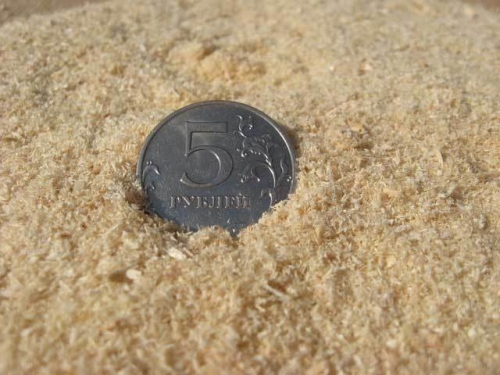
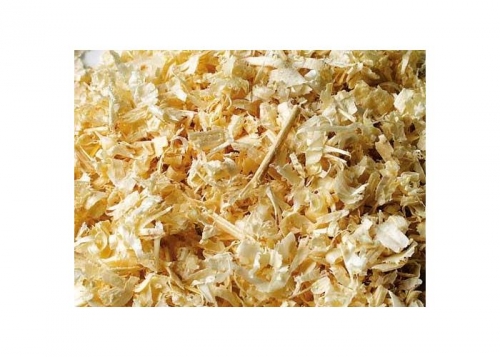
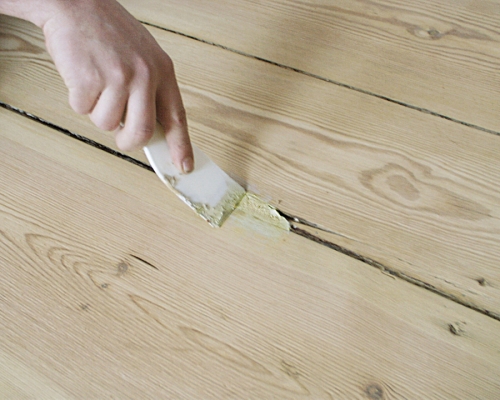



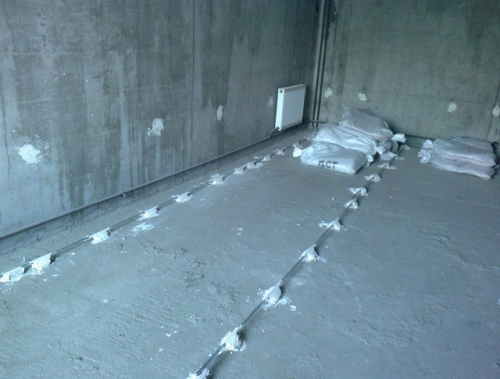
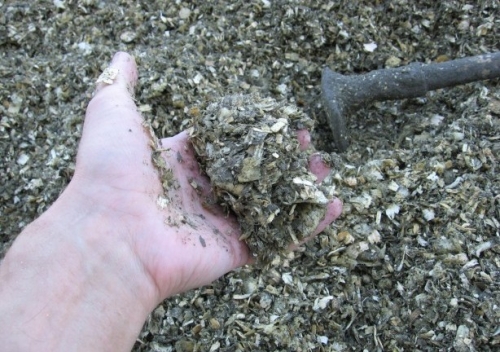
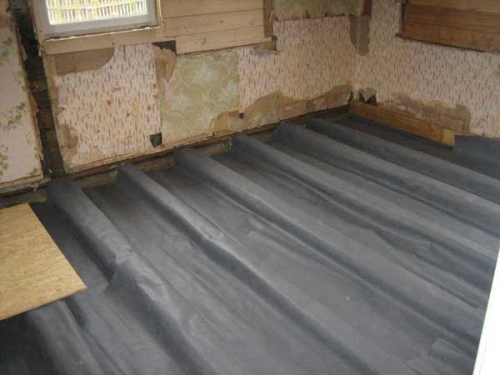
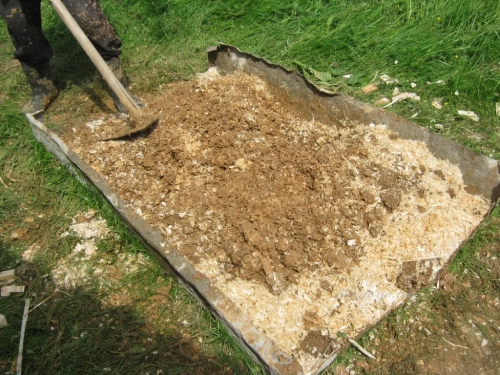
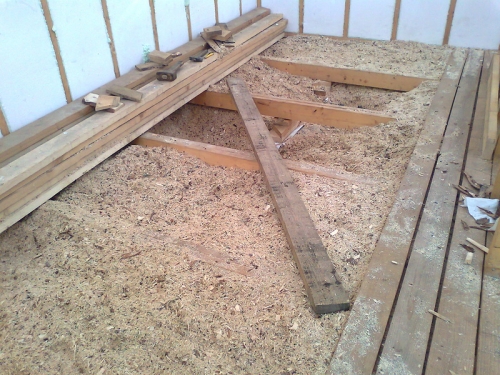

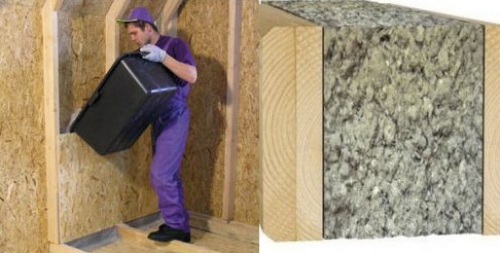


I liked the article. We
I liked the article. We are engaged in insulation of facades. We ask your permission to post this or link to it on our website http://termosystem.com.ua